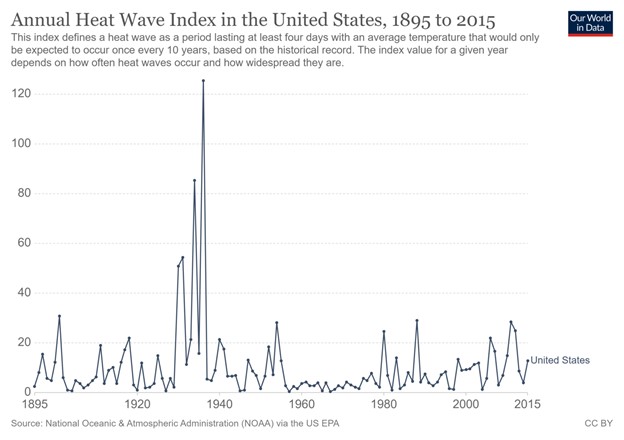NBC News published an alarmingly flawed story today titled, “Wildfires fueled by climate change threaten toxic Superfund sites.” NBC claims wildfires have occurred near Superfund sites, and that the wildfires are caused by climate change. The article further claims wildfires ravaging Superfund sites could release potentially toxic air pollutants. While wildfires may theoretically burn near Superfund sites, real-world data and scientific consensus shows that climate change is not causing or worsening wildfires..
“[W]ildfires heightened by climate change [threaten] 234 Superfund sites across the country,” asserts NBC. However, drought is the primary climate component of wildfires, yet scientists and scientific evidence show climate change is not making wildfires worse.
Also, as reported in as reported in Climate at a Glance: Drought, the United Nations Intergovernmental Panel on Climate Change (IPCC) reports with “high confidence” that precipitation has increased over mid-latitude land areas of the Northern Hemisphere (including the United States) during the past 70 years. IPCC also has “low confidence” about any negative precipitation trends occurring globally.
Moreover, NOAA reports America is currently is undergoing its longest period in recorded history with less than 40 percent of the country experiencing “very dry” conditions. And the United States registered its smallest percentage of land area experiencing drought in recorded history in 2017 and then again 2019.
Also, a recent summary of heatwave records, Climate at a Glance: U.S. Heatwaves, cites data from the National Oceanic and Atmospheric Administration (NOAA). The data show heatwaves are far less severe in recent decades than was the case during the 1930s – nearly 100 years of global warming ago (See figure 1 below). Also, the most accurate nationwide temperature station network, implemented in 2005, shows no sustained increase in daily high temperatures in the United States since at least 2005.

Figure 1, Heatwave Index for the contiguous United States, 1895-2015 (no later data is available). The U.S. Annual Heat Wave Index tracks the occurrence of heat wave conditions across the United States. This index defines a heat wave as a period lasting at least four days with an average temperature that would only be expected to occur once every 10 years, based on the historical record. The index value for a given year depends on how often heat waves occur and how widespread they are. Source: Our World in Data, using data from NOAA.
As a result of these trends, as documented in a recent article here on Climate Realism, wildfires globally are in long-term decline. Indeed, NASA satellites have measured a 25-percent decrease in global lands burned since 2003.
Also, U.S. acres burned each year are much fewer now – even in our worst years – than was the case in the early 20th century.
Wildfires may or may not actually threaten some Superfund sites. However, NBC is wrong to claim climate change is heightening this risk. The data clearly shows that if climate change is having any impact on wildfires threatening Superfund sites, it is to make the threats less likely and less severe.
[Photo courtesy of Wikimedia Commons.]














